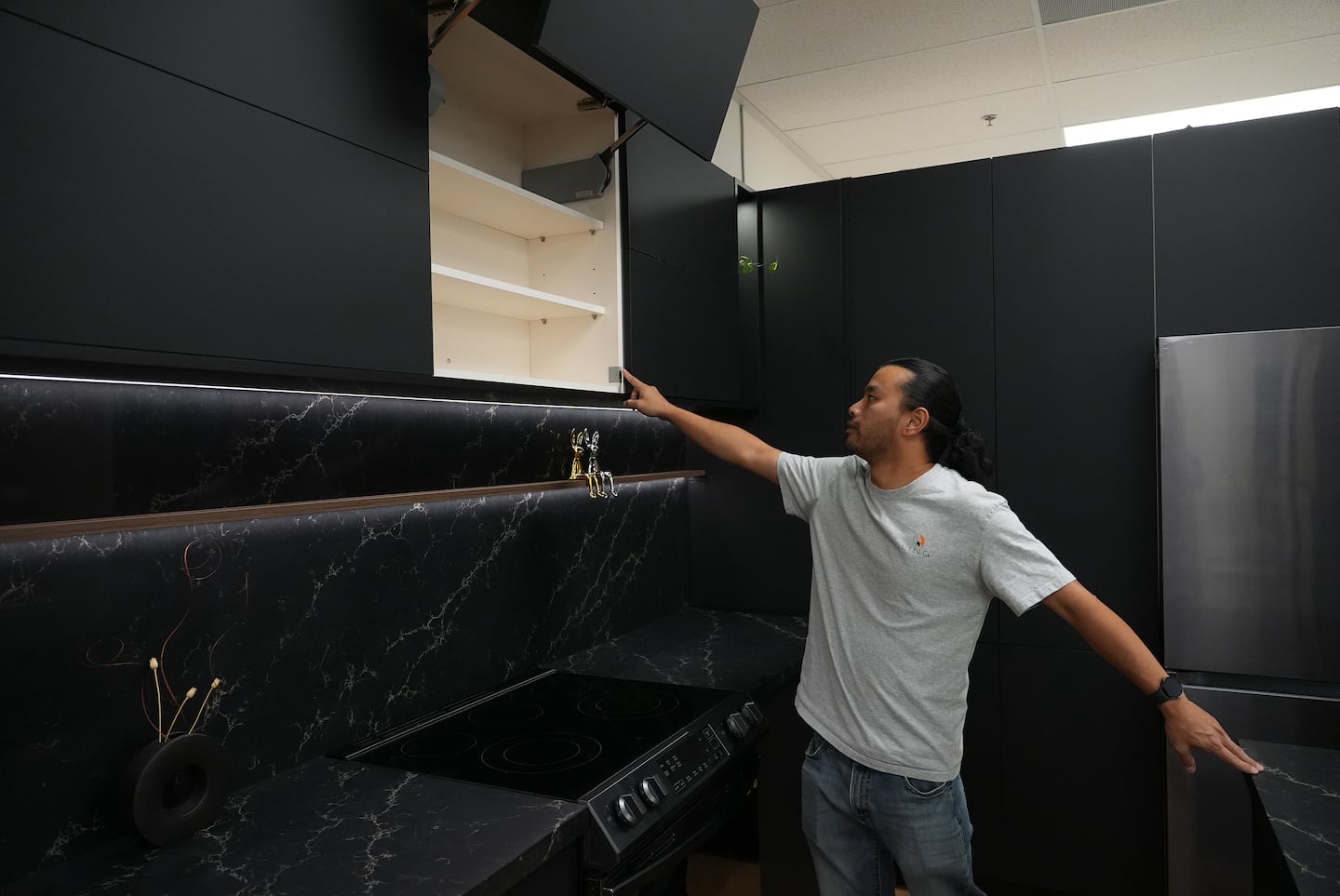Although high mortgage rates have depressed existing home sales in recent years, a forecast of remodeling activity from Harvard University's Joint Center for Housing Studies expects homeowner spending on improvements and maintenance to remain stable through mid-2026.
Trump calls cheap imports a threat to national security
A proclamation signed by President Donald Trump on September 29 cited national security and foreign trade practices as reasons for imposing the tariffs on certain finished wood products and product components.
Of these, the highest tax rates apply to imported washbasins and kitchen cabinets: 25 percent until the end of the year and 50 percent from New Year's Day.
Upholstered chairs, seats and sofas will also be subject to a global tariff of 25 percent from Tuesday, with the rate set to rise to 30 percent on January 1. Additionally, the presidential proclamation imposed a 10 percent import tax on softwood lumber and lumber derived from evergreen trees such as pines and cedars.
Softwoods are often used to make furniture and in timber frame construction. According to the National Association of Homebuilders, Canada is the source of about 85 percent of the softwood lumber that the United States imports, or nearly a quarter of the national supply.
Some U.S. trading partners receive more favorable treatment when it comes to tariffs on furniture and furnishings. The tax on British exports was capped at 10 percent, while the tax rate on wood products from the European Union and Japan was capped at 15 percent.
The American Kitchen Cabinet Alliance and other trade and advocacy groups pushed for tariffs to offset the flood of cheap cabinets from countries like Vietnam, Malaysia, China and others that have emerged in the decades since U.S. furniture production moved overseas.
Products made in the USA tend to cost more but are often of better quality.
A higher end result for renovators on a budget
John Lovallo, an analyst at UBS Bank, estimates that tariffs on imported cabinets and vanities could add about $280 to the average cost of building a single-family home, not enough to derail a project whose total price is often more than 1,000 times higher.
Some business owners say they plan to cover all tariff-related costs for now rather than increasing customer prices.
John Dean, founder of Dean Cabinetry in Connecticut, sells cabinets ranging from cheaper imports to custom models made in his shop. Imported products make up about a third of its sales, but Dean said he doesn't expect the tariffs to have a big impact.
Two of his suppliers in China and Vietnam, where he buys imported cabinets, said they would raise prices by 10 percent to offset some of the tariff costs.
Dean said he won't charge customers higher fees for now. Because a kitchen remodel is an expensive proposition to begin with and the cost of lumber and labor increases, higher cabinet prices could hurt demand, he said.
“My personal view is that most small and medium-sized businesses are trying to absorb these costs,” he said.
Jason Miller, a professor of supply chain management at Michigan State University, said tariffs on wood products are likely to have a greater impact on selection than on prices as importers scale back orders and focus on best-sellers and products with the highest profit margins.
“It will make importers more selective about the varieties they bring in,” Miller said, “So I think the bigger impact will be on the product variety side: consumers should expect less variety.”
What closet companies expect
Although the White House said the tariffs were aimed at boosting domestic production and protecting U.S. companies from predatory trade practices, some Cabinet members say this will be difficult because their supply chains are multinational.
Linq Kitchen, a Los Angeles-area company that designs, builds and installs modern kitchen cabinets, uses plywood and melamine panels from Asia and Europe in its projects, said co-founder Josh Qian. There is no suitable domestic alternative, he said.
“The kitchen cabinet industry is highly globalized and even U.S.-based manufacturers rely on imported materials, hardware and finishes,” Qian said. “These tariffs may sound protective, but in reality they often increase costs throughout the supply chain.”
At the same time, furniture manufacturers that do not sell foreign products or rely on imported components are looking forward to more orders. One of these is ACO Denver Custom Cabinetry in Denver, Colorado, which contracts with Amish, Mennonite and New German Baptist shops in the Midwest to hand-craft custom cabinets.
Andrea Mulkey, the company's president and co-founder, said her main concern is whether interest in U.S.-made cabinets will grow too quickly.
“It's hard to predict how much new business we might get if the competition is affected,” Mulkey said. “We simply wouldn't be able to serve everyone if demand suddenly increased. The real challenge is similar to what we experienced after the COVID-19 crisis, when everyone was employed at the same time and access to raw materials became difficult.”
Curio Design Studio has its custom cabinets made in Minnesota and Wisconsin, but Harlow worries about the tariffs costing her customers.
“I think it will weaken consumer confidence and create the impression that labor will inherently become more expensive,” Harlow said. “I think we need to work harder to attract potential customers by letting them know that this blanket statement 'kitchen cabinets will go up 50 percent' has no impact on our particular business model.”
